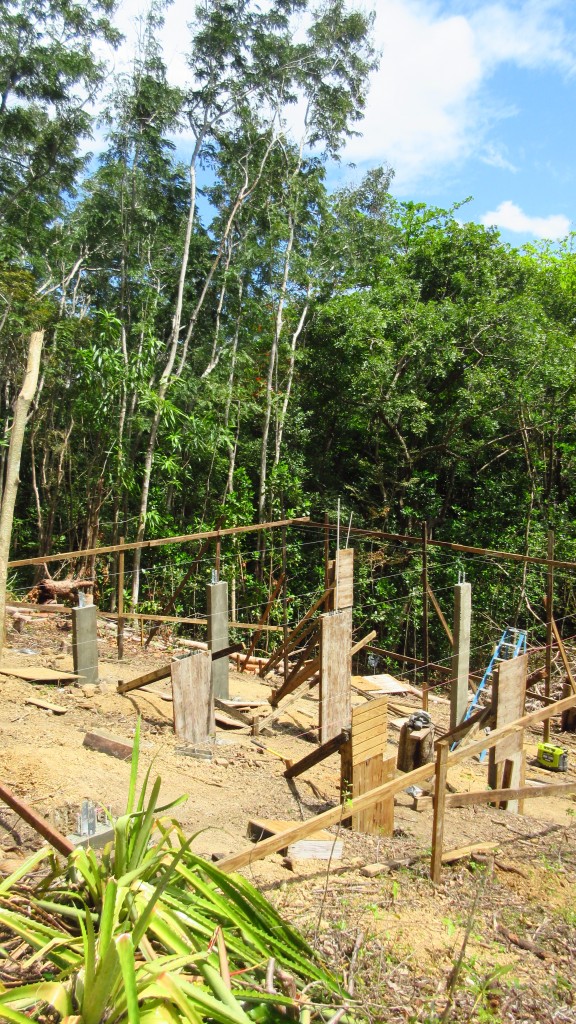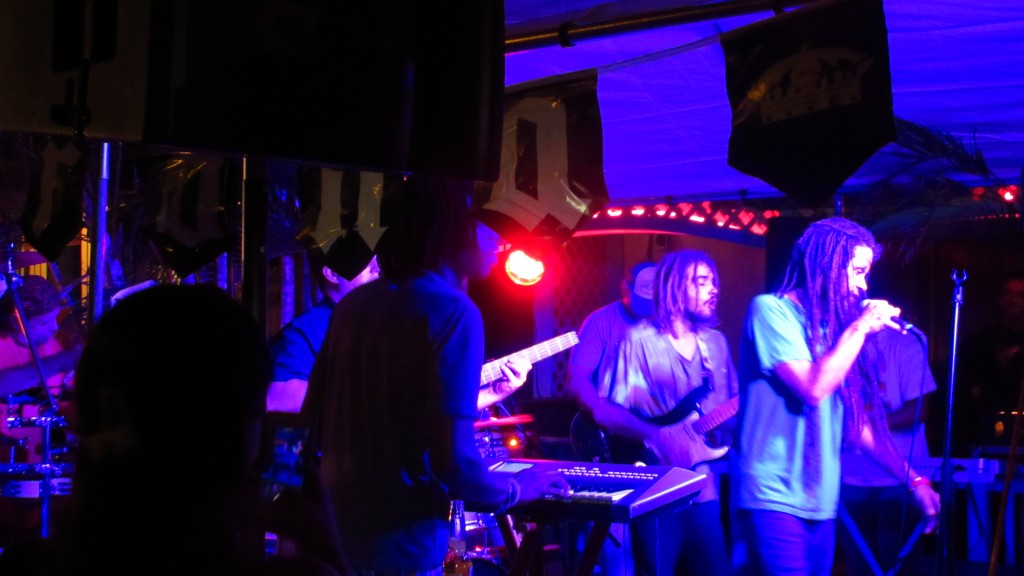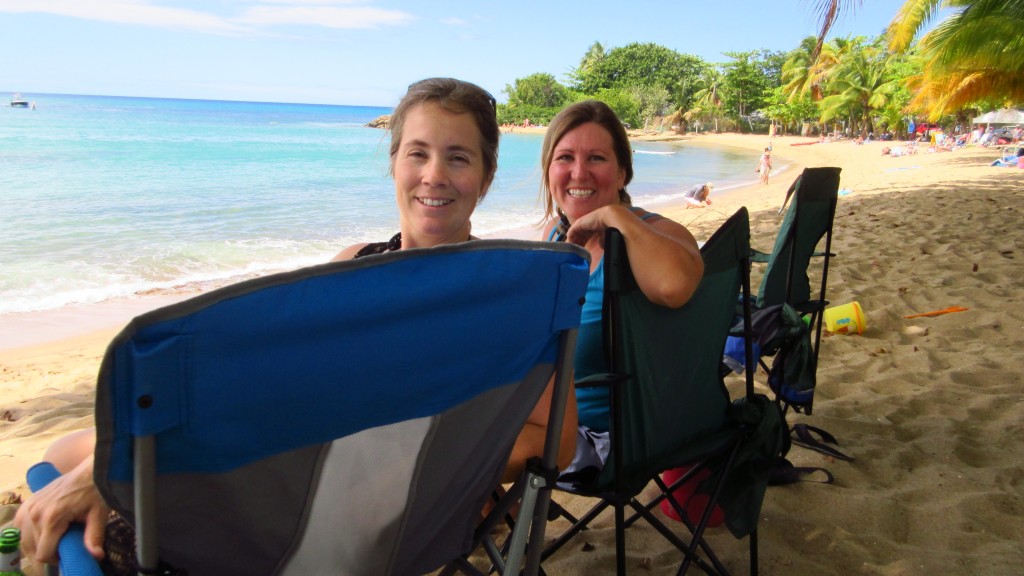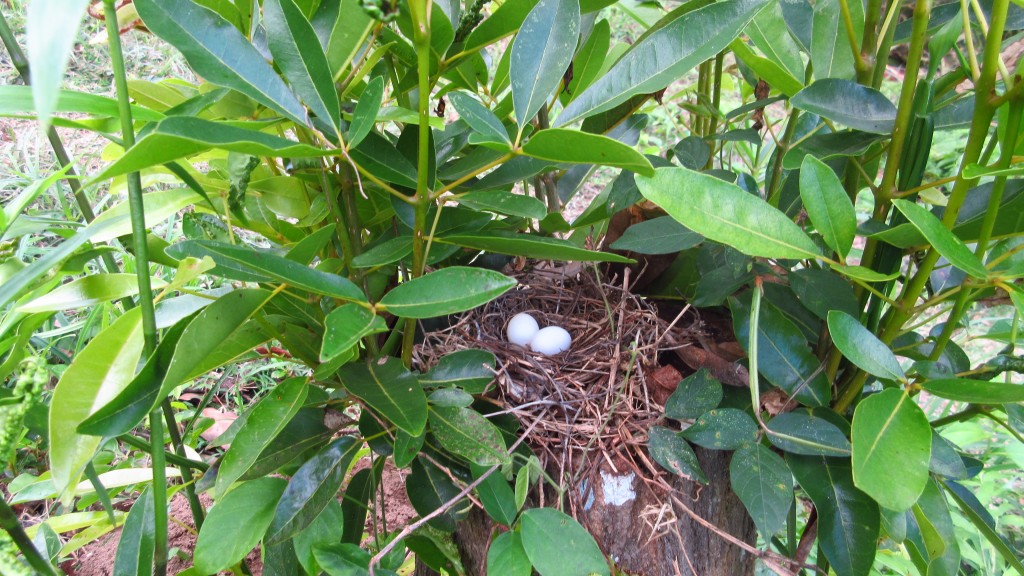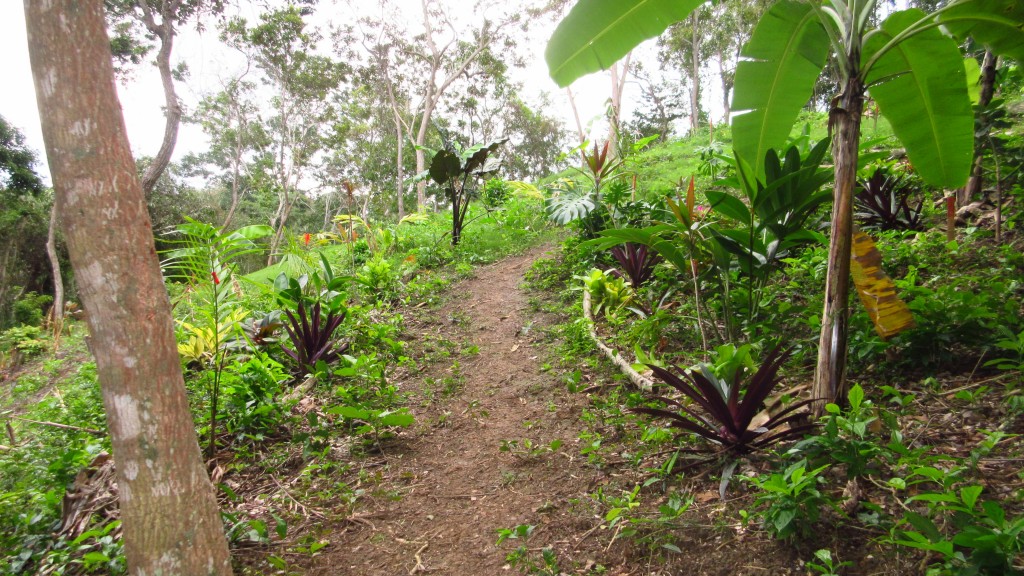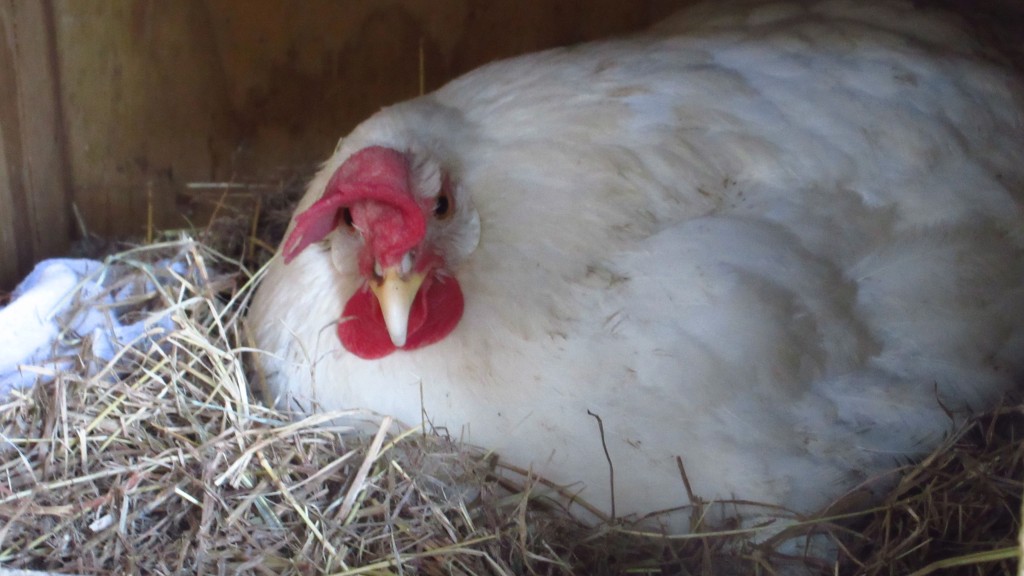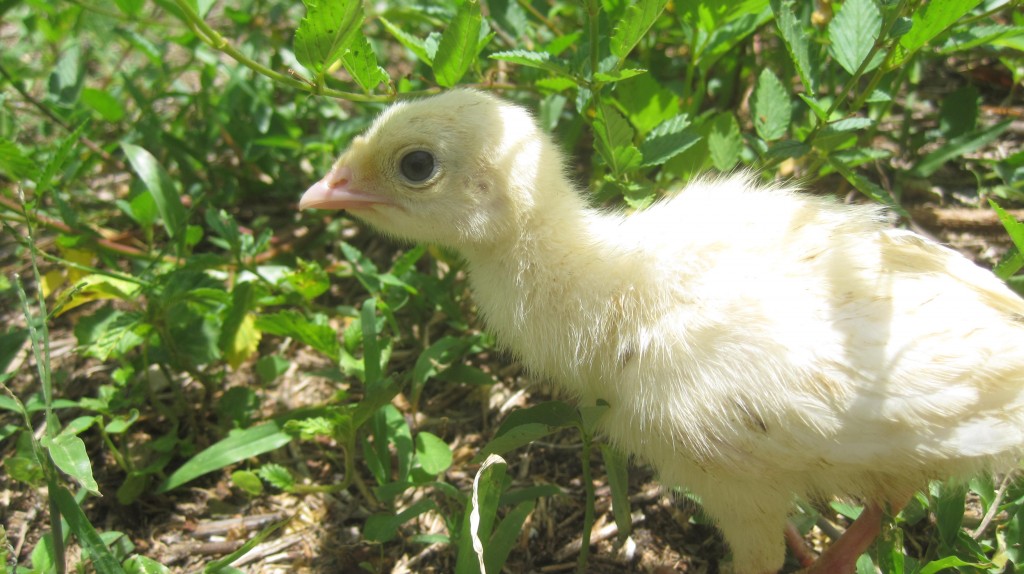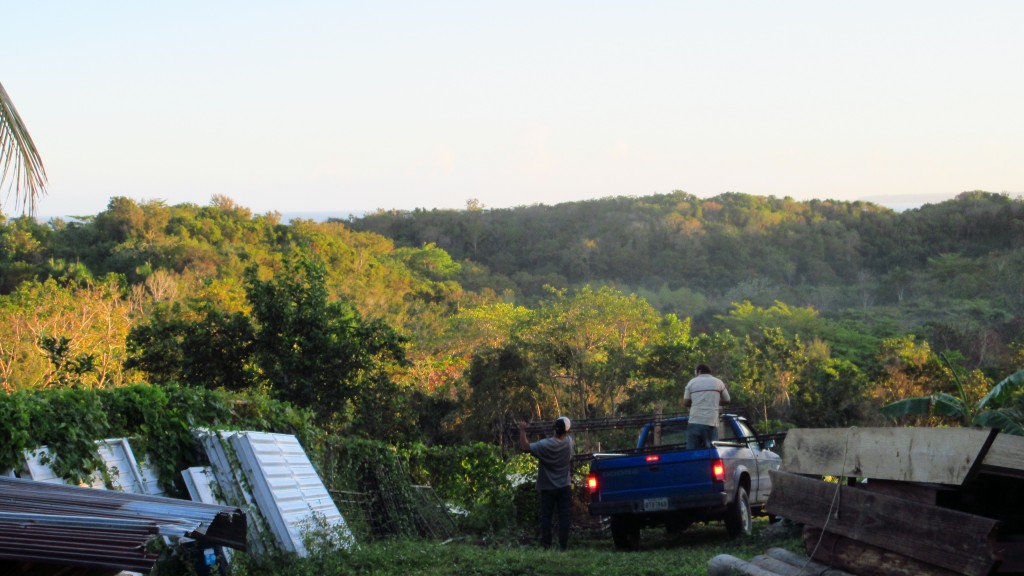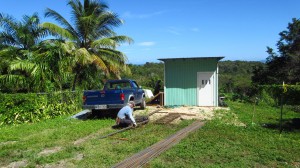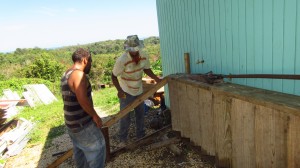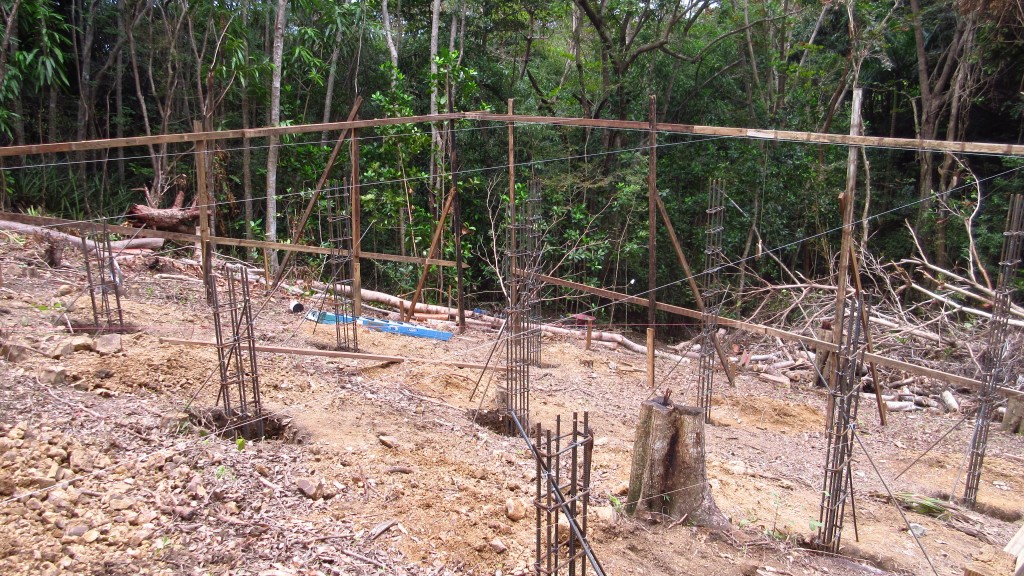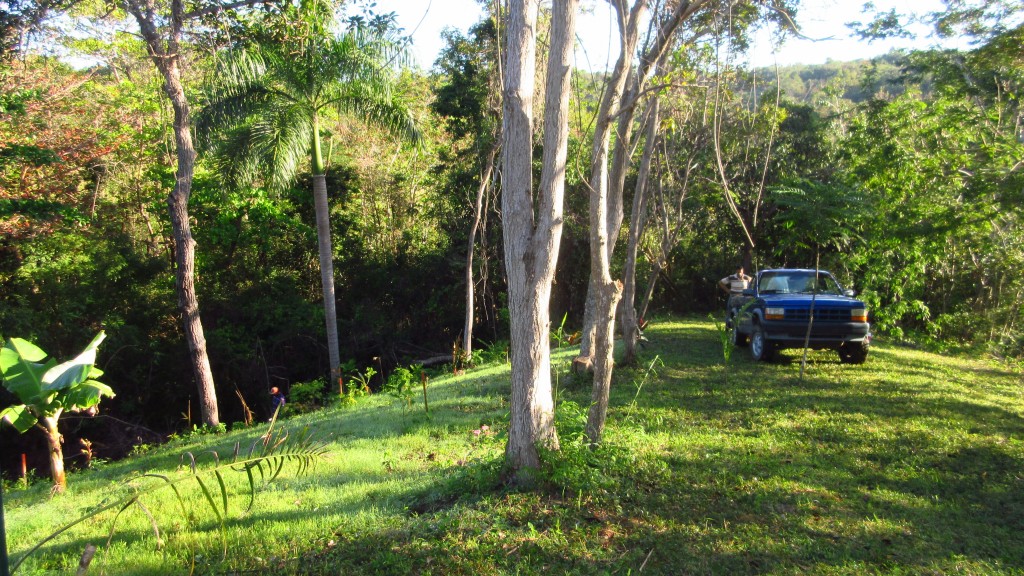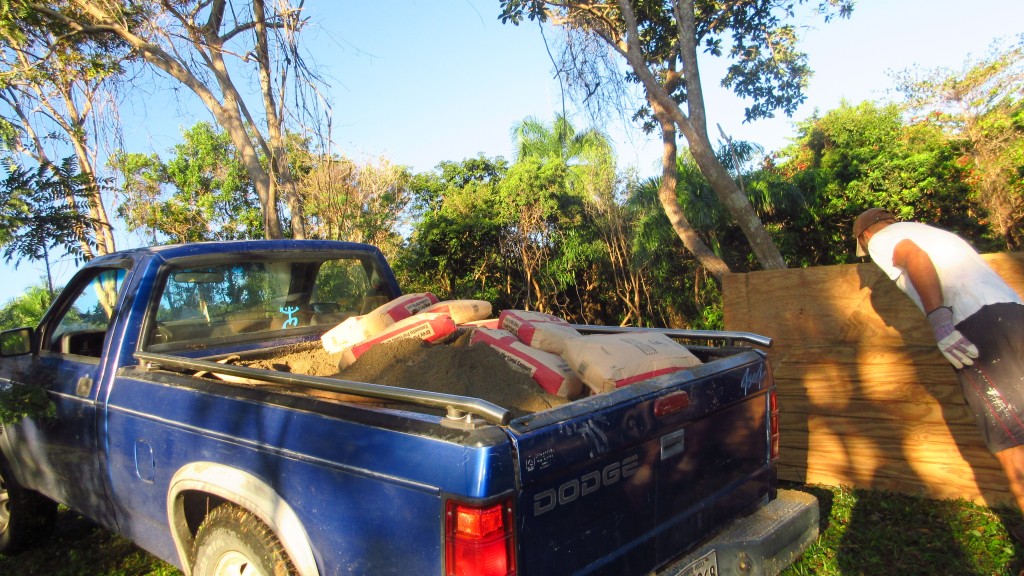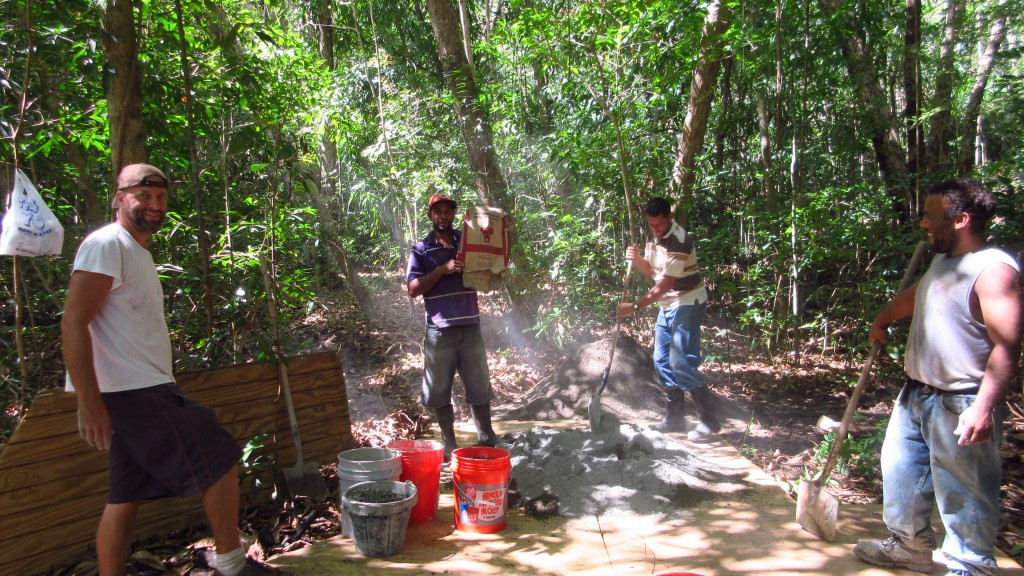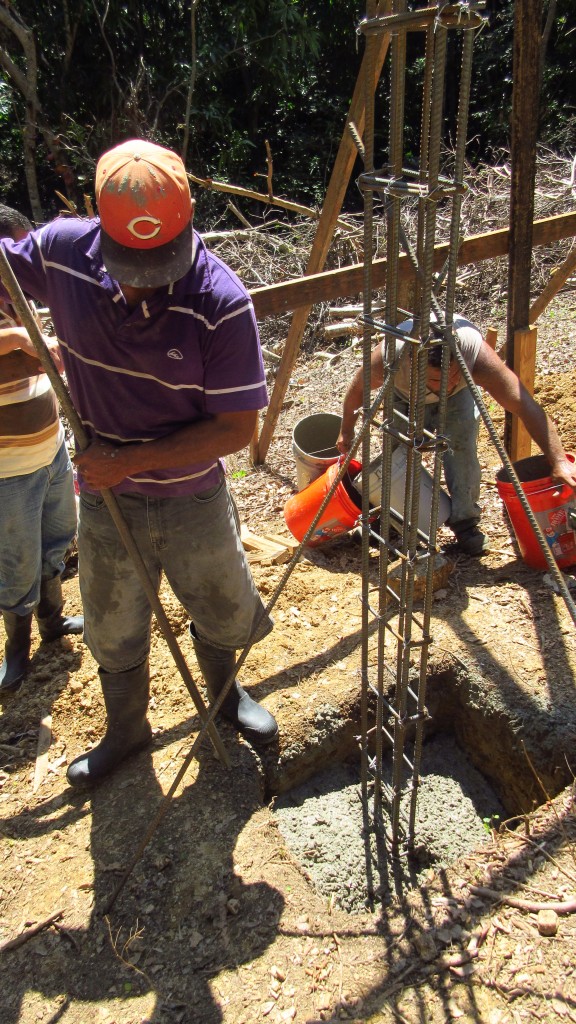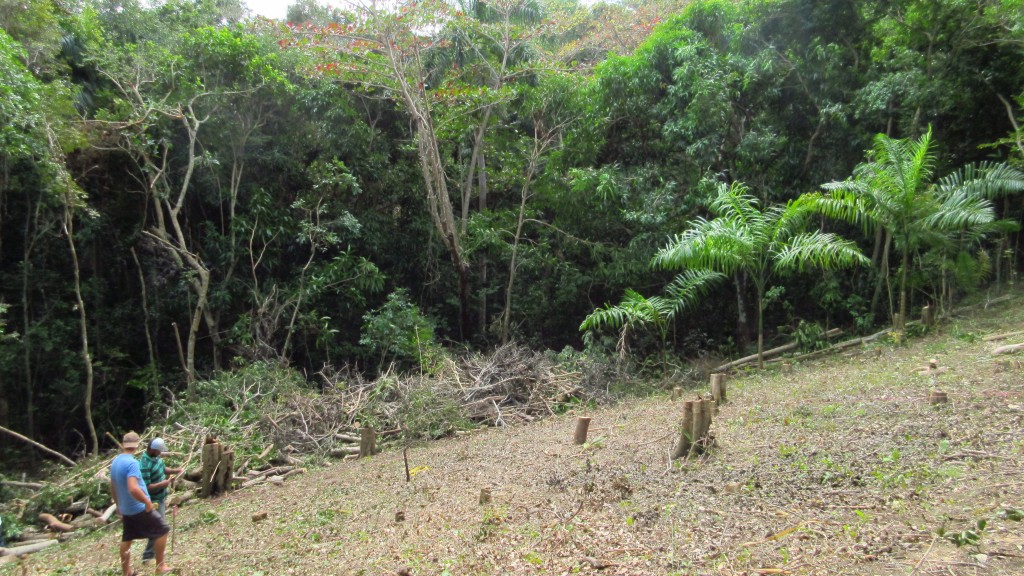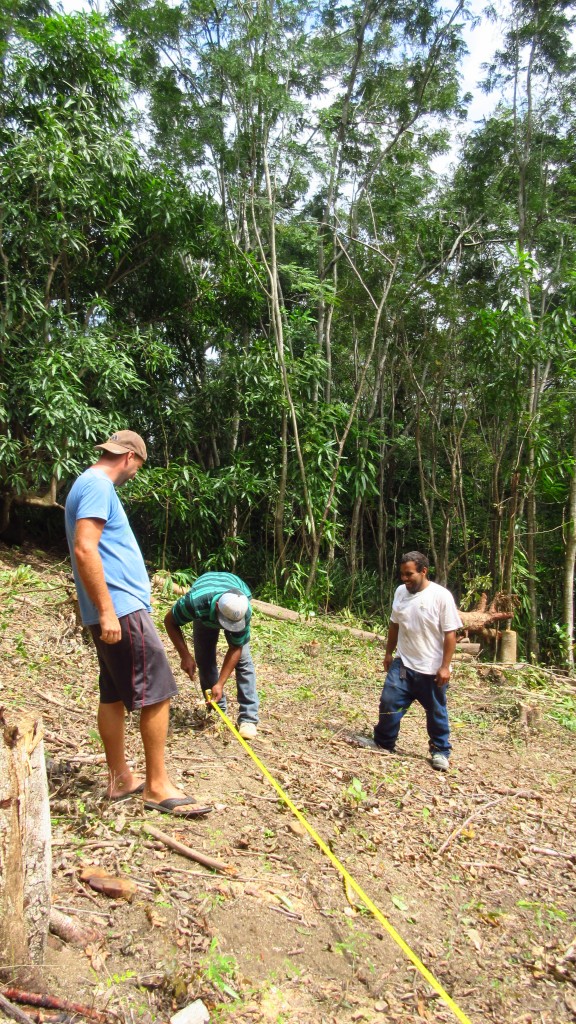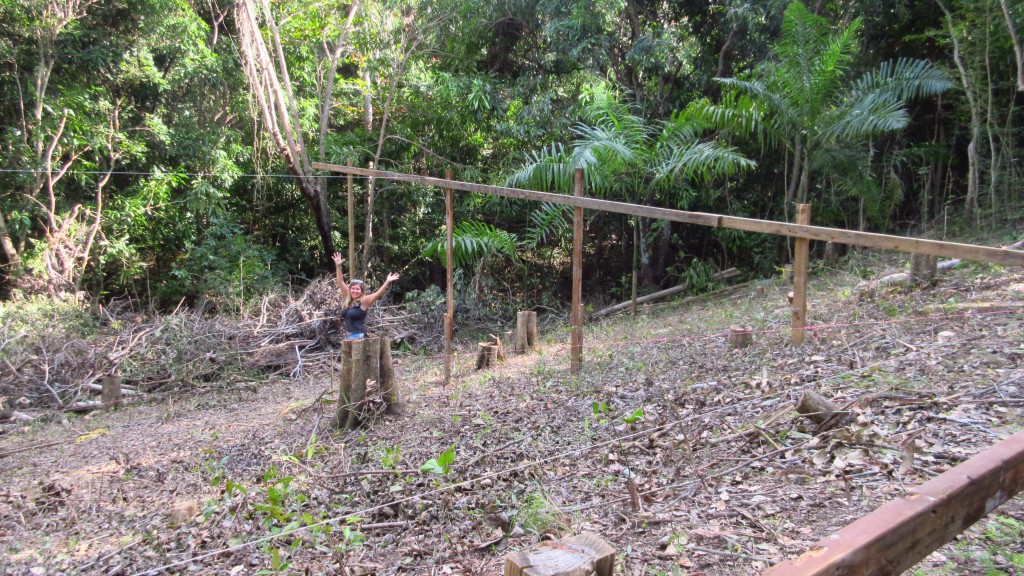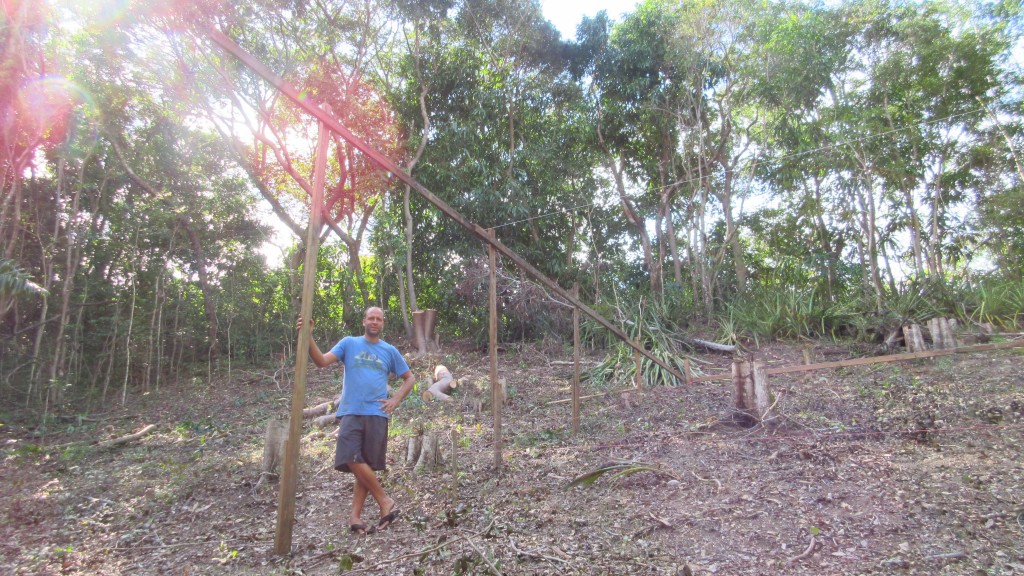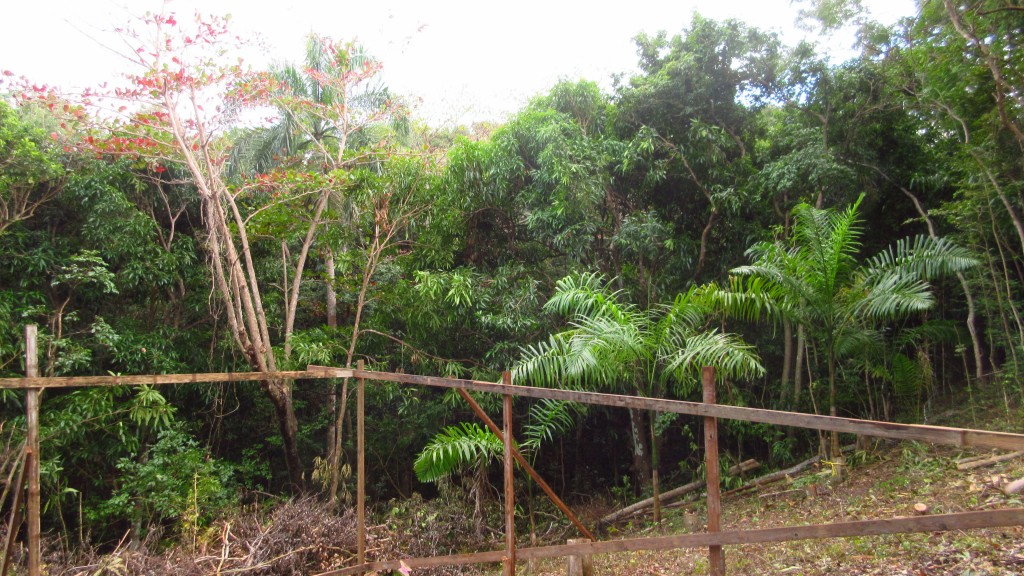This week went by pretty fast because we had all of our days filled up. The guys worked four days out of five finishing up the columns -building the molds, mixing concrete, etc- and the one day that they didn’t, Britton and I spent about 10 hours shoveling and then carrying buckets of rocks up and down the quebrada like the sorcerer’s apprentice in Fantasia. We were joking that this is by far the best exercise regimen you could come up with! Cardio, strength training and repetition. We were super sore (especially my shoulders), but the next day was more work.
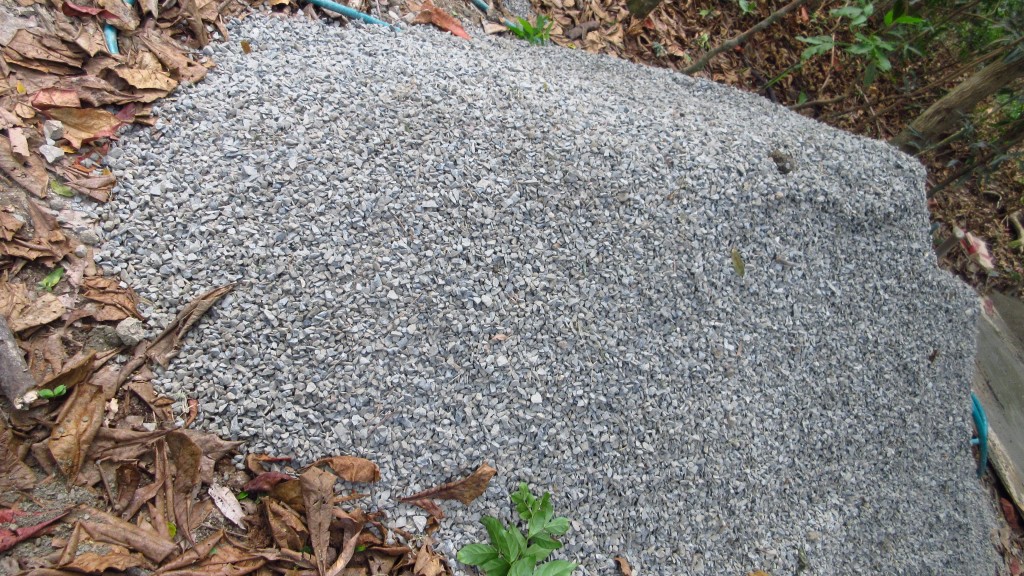
Britton and I literally moved tons of rocks to this site
They mixed all the concrete and then had to load it into buckets and into a wheelbarrow. One person “drove” the wheelbarrow and the other one or two acted as the horses and in that way they hauled the super heavy wet concrete to the columns.
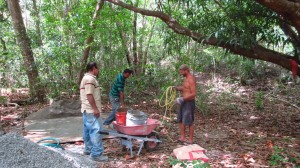
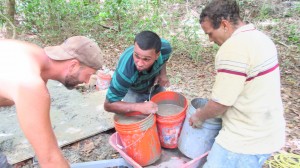
Loading the buckets and wheelbarrow to bring to the site
The hard work wasn’t over at the site either. At this point they had to lift each super heavy bucket of liquid concrete mix in the air where it was then lifted by the guy on the ladder and then dumped into each column form.
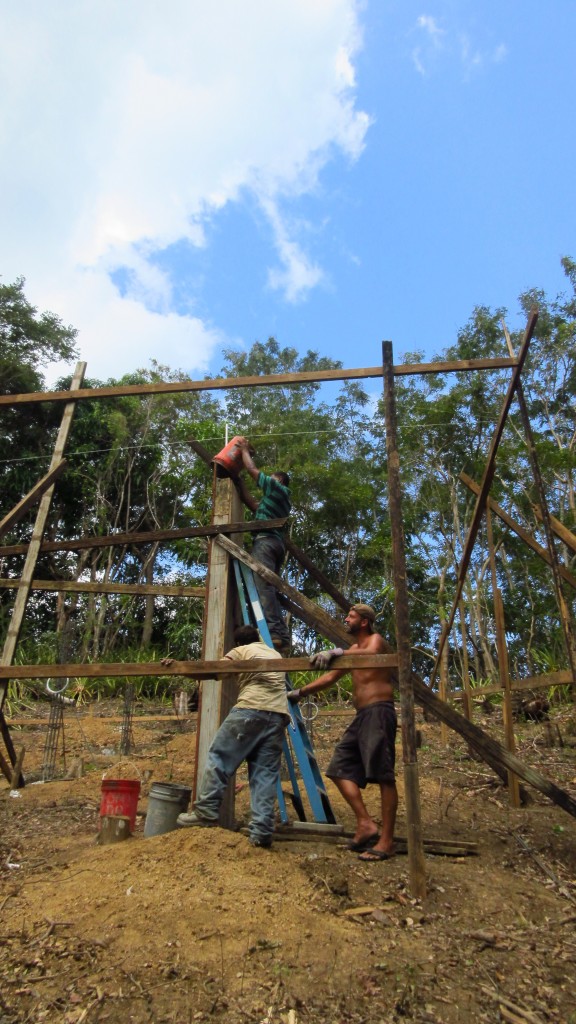
Dumping the concrete into the column mold

The turkeys checking everything out
By the time the weekend came, we were ready for a break from the work. This weekend is the annual Corona Pro Surf competition and like the one we went to last year, it brought quite the crowd into Rincón. On Saturday night we went out to the bar Calypso because a great reggae band called the Predator Dub Assassins was playing and we had a blast.
We used to listen to them some when we were preparing for our move here to get psyched up, so it was cool to see them in person. Plus one of our friends was playing in the band with them!
This video was filmed here in Rincón
And finally, today we enjoyed a beautiful beach day down at the marina with friends.
Lots of work, and lots of play, too.

